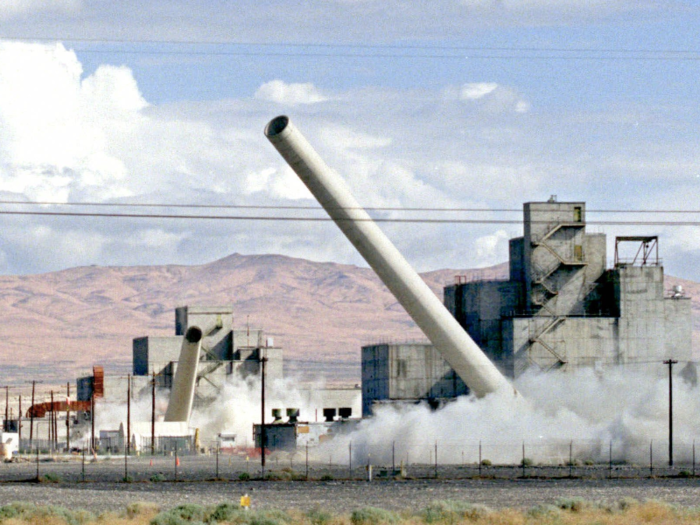- Home
- slideshows
- miscellaneous
- Inside America's most toxic nuclear waste dump, where 56 million gallons of buried radioactive sludge are leaking into the earth
Inside America's most toxic nuclear waste dump, where 56 million gallons of buried radioactive sludge are leaking into the earth
Hanford is built on a desert in Washington, spread out over 586 squares miles.

The Columbia River passes Hanford to the north and the east by a few miles, and it's downstream from two dams.
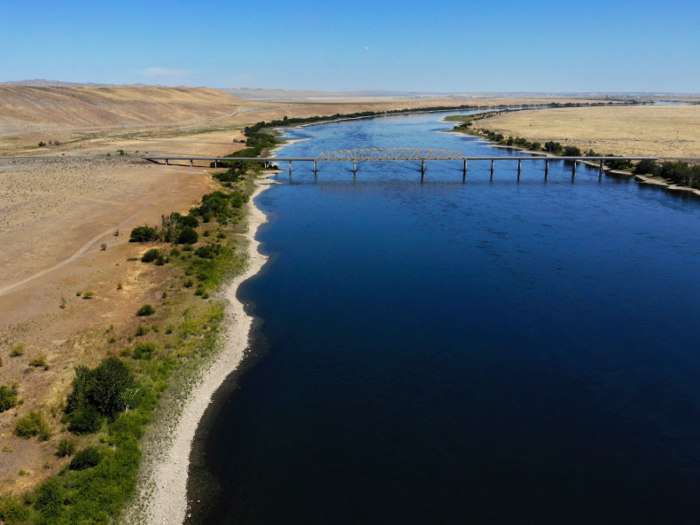
The government wanted the site to be close to dams for electricity, and close to the river so it had a source of cool liquid to cool the reactors.
In 2017, the EPA said contaminated groundwater was flowing freely into the river.
The Hanford Nuclear Reservation began operating on September 6, 1944.
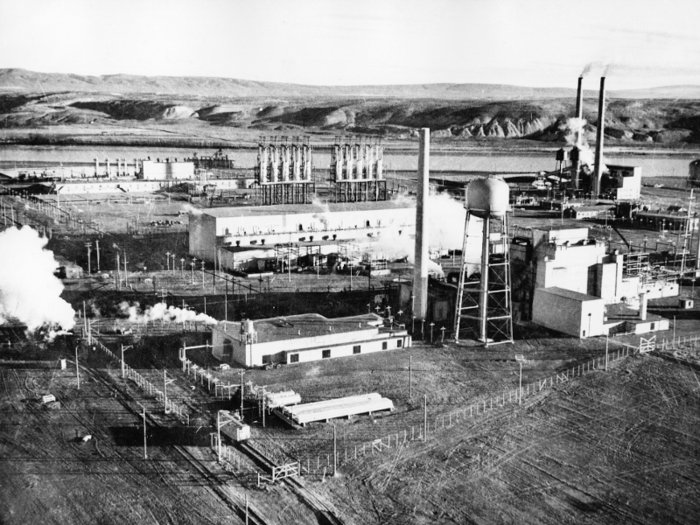
Hanford played a vital part in the top-secret Manhattan Project, which was the government's research and development program for nuclear weapons.
The government purchased the land in 1943, and gave about 1,500 people 30 days to leave.
The first reactor was built in 11 months, and the majority of the 50,000 person workforce did not know what it was that they were working on...
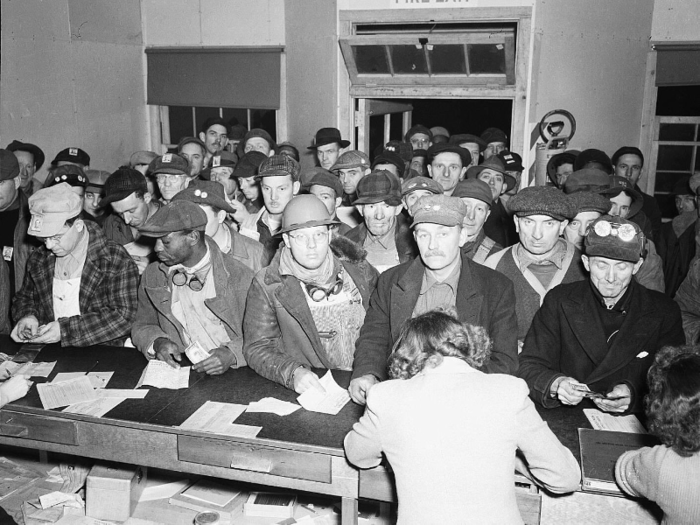
Sources: Court House News, Los Angeles Times
...until the first nuclear bomb was detonated over Hiroshima on August 6, 1945.
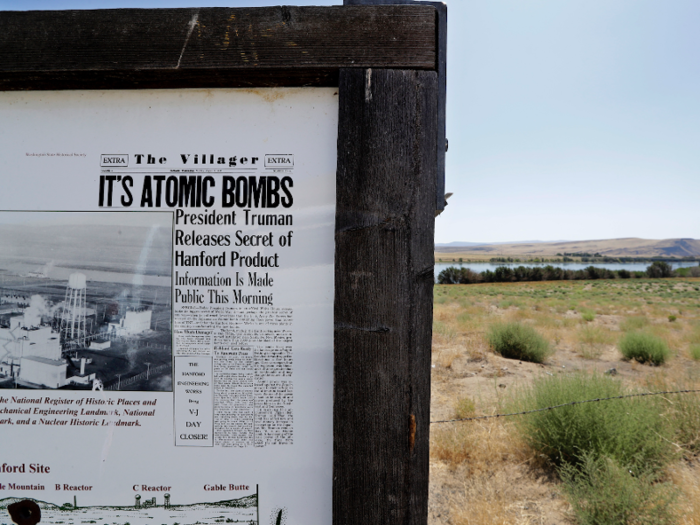
Source: Court House News
To keep the nuclear complex secret, the government banned trespassing and set up a buffer zone called Hanford Reach.

Instead of the land being developed by farmers and ranchers, it's been left untouched for 75 years, and wildlife has boomed. In 2000, former President Bill Clinton made the 195,000 acre area a National Monument.
In the area, there are herds of elk, Chinook salmon breed in stretches of the river in Autumn, and there is also an abundance of birds, including burrowing owls, Swainson hawks, and sagebrush sparrows.
The "B" reactor was the first large-scale nuclear reactor ever built. This is its control room.
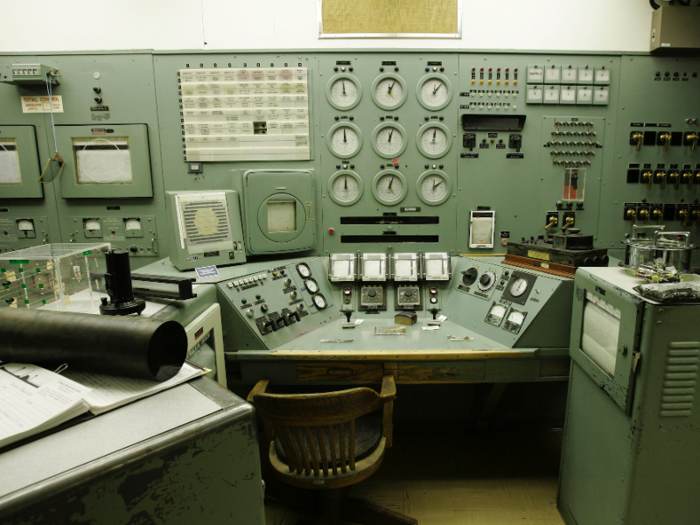
It was the "B" reactor that produced the first plutonium in the United States. The first supply of plutonium was delivered to the army on February 2 1945.
Hanford's plutonium was used in the Trinity Test, the first detonated nuclear bomb, and in Fat Man, the nuclear bomb was detonated over Nagasaki, Japan on August 9, 1945.
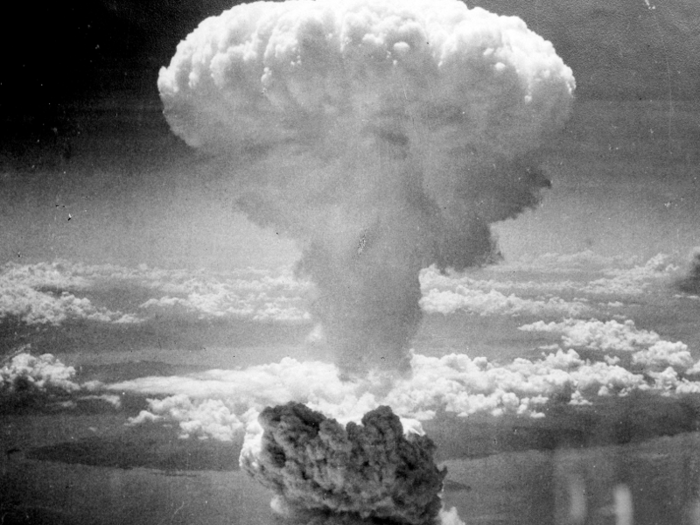
Source: Tri-City Herald
After World War II, there was a brief production hiatus. But in 1948, plutonium became a priority again.
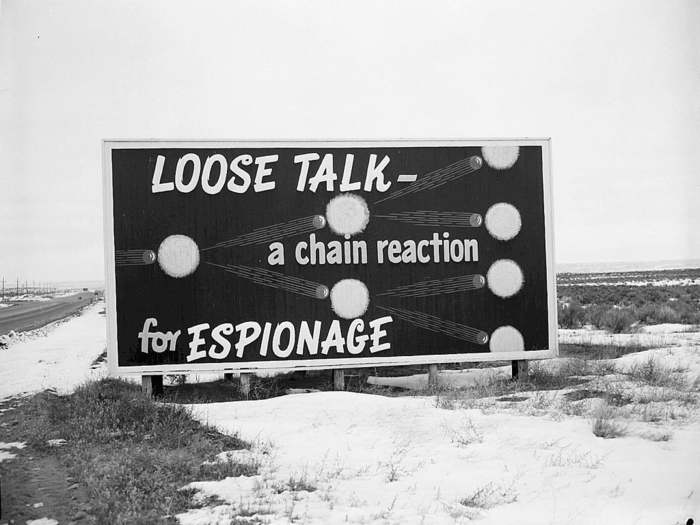
This time it was to supply the US with a nuclear arsenal during the Cold War. Five more reactors were built by 1955. Production would continue on into the late 1980s.
When the plant was up and running, using nine nuclear reactors and five reprocessing plants, it produced about 65% of the plutonium used by the US government.
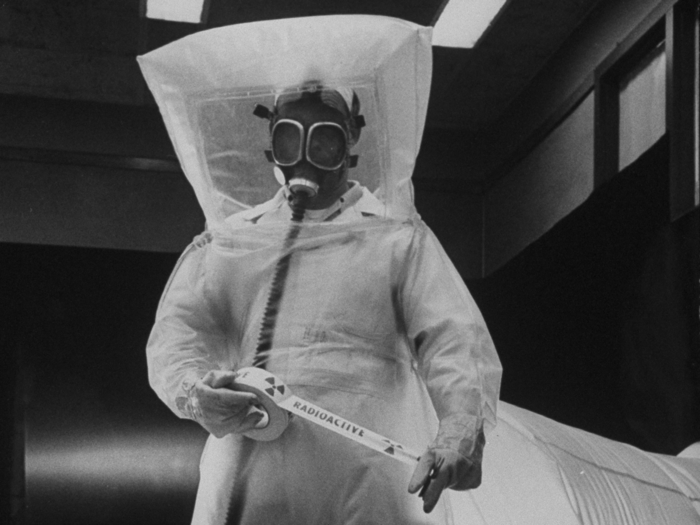
The reactors weren't all built at once, but over a twenty year period from 1943 to 1963.
Hanford produced 67 metric tons of plutonium in all, and was responsible for a large part of the 60,000 nuclear weapons made by the US by 1987.
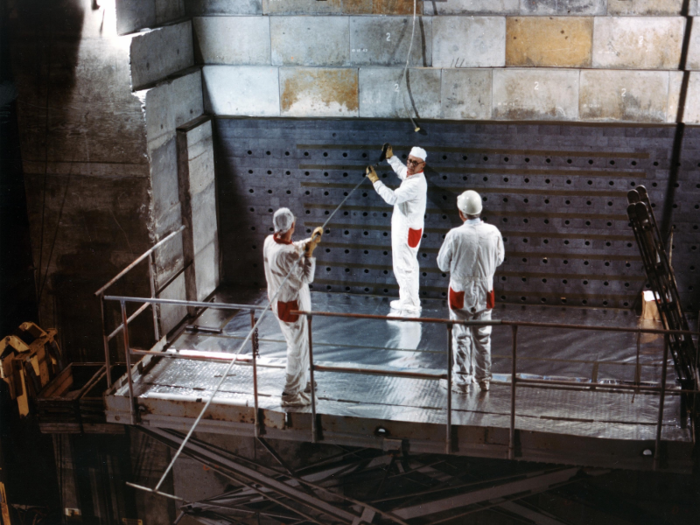
Sources: The Atlantic, New York Times
But producing the plutonium came at a cost. Even a small batch would result in a huge amount of contaminated waste.
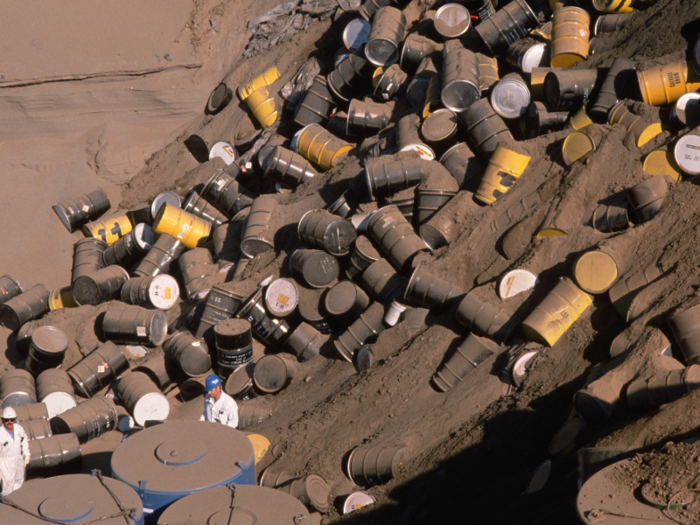
Source: Hanford
Solid waste can be anything from contaminated tools, to clothing, or broken equipment.
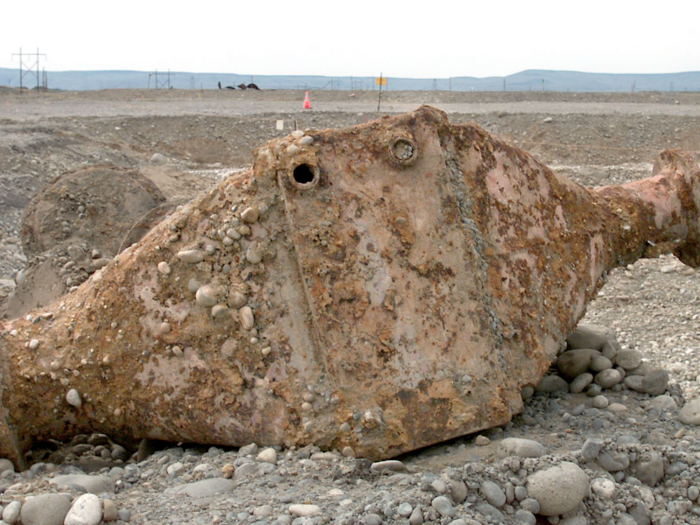
While liquid waste is usually contaminated water or sludge, which is described as having the same consistency as peanut butter.
Signs of Hanford's impact on on the environment were noticeable as early as in 1960, when a 55-foot whale, killed off the coast of Oregon, was radiating gamma rays.
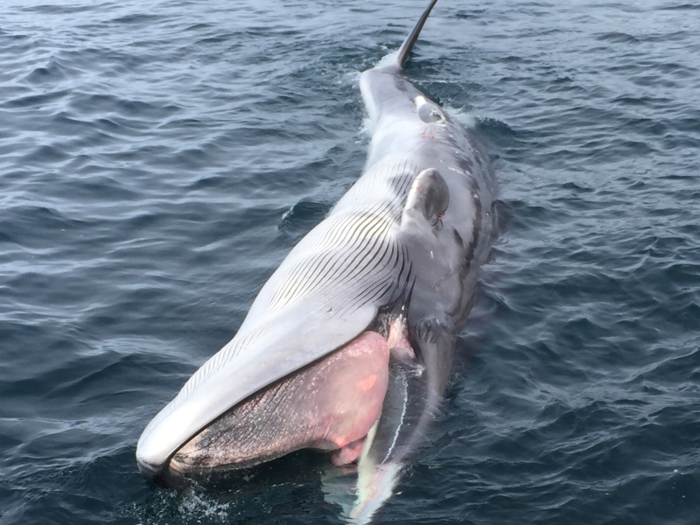
Scientists suspected it had eaten irradiated plankton contaminated from waste products that had floated down the Columbia River into the sea.
Admittedly, it was new territory for the US. Here, Homer Moulthorp wears one of the suits he invented to stop employees from getting radiation poisoning.
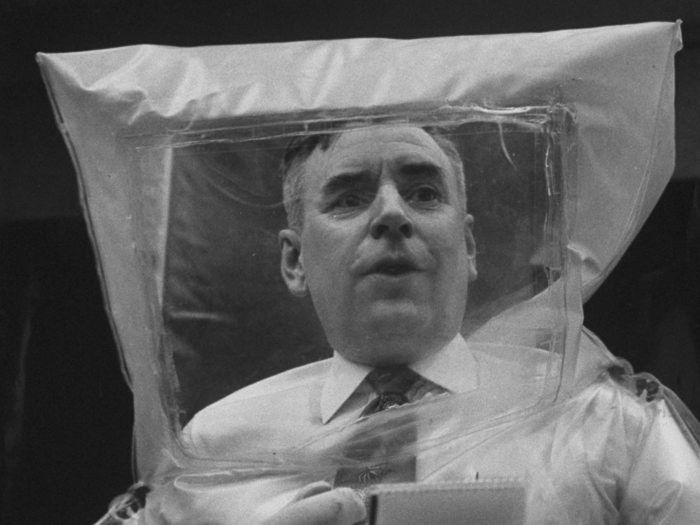
The plastic suit was nicknamed "Homer's Hideous Hallucination." Before that, the employees had to wear heavy clothing that had to be buried after being used once.
To monitor radiation poisoning, scientists working at the complex tested animals, including rats, cats, dogs, cows, sheep, pigs, and alligators.
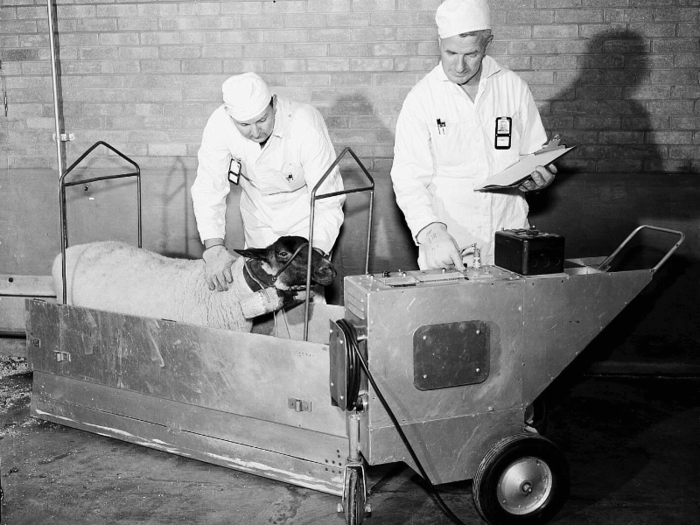
The tests were to try and work out what effect radiation would have on people. In 2007, 40,000 tons of dead animals and manure were uncovered from trenches in Hanford, including 18 alligators. Of the waste, 95% of it was contaminated manure.
Because it was a new kind of science, much of the nuclear waste was mismanaged and improperly disposed of.
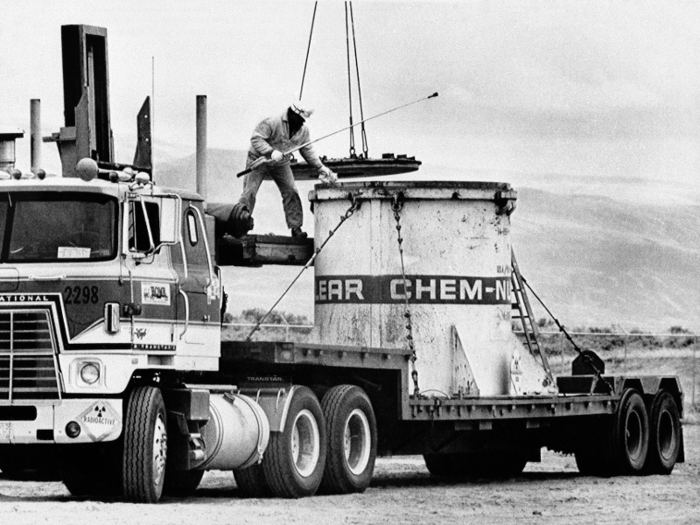
When Hanford first produced nuclear waste, workers simply took contaminated clothes and tools and buried them in the desert, without recording where. This made the cleaning process difficult in the years to come, since the area is so large, and there's no way for sure to know what's buried where.
Hanford had different processes for different wastes — slightly contaminated liquids went into ponds, solid waste was buried, and some gases were released into the air.
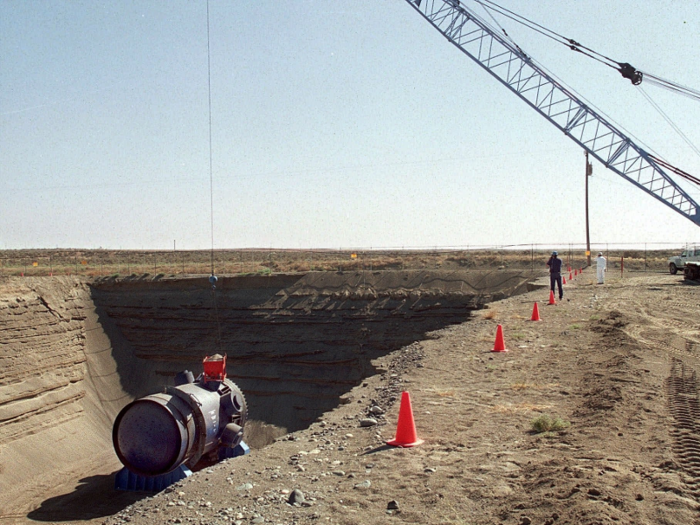
Across the reserve, there are 1,600 waste sites. 24 million cubic feet of solid radioactive waste is buried in trenches and tunnels.
But the most concerning is the highly radioactive waste that was stored in 177 storage tanks, each holding between 55,000 and 100,000 gallons.
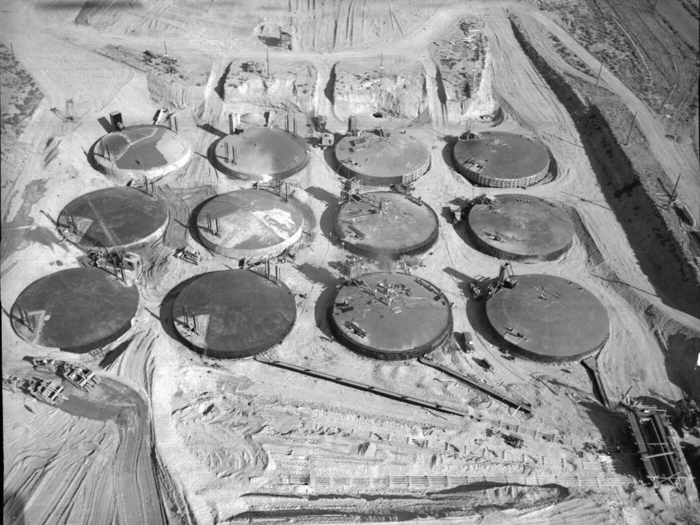
The first 149 tanks were built with a single-shell of steel. In 1968, officials developed a new double-shelled model, storing waste in 26 of them.
Altogether, the tanks contain twice the radioactivity of what was released during the 1986 Chernobyl disaster in Russia. By 1989, 68 of the 149 tanks had leaked.
In 2010, Robert Alvarez, a former Energy Department official, said enough plutonium was buried at Hanford to create 1,800 bombs the size of what was detonated on Nagasaki.
Along with the tanks, cesium and strontium capsules are stored in water in the reserve.
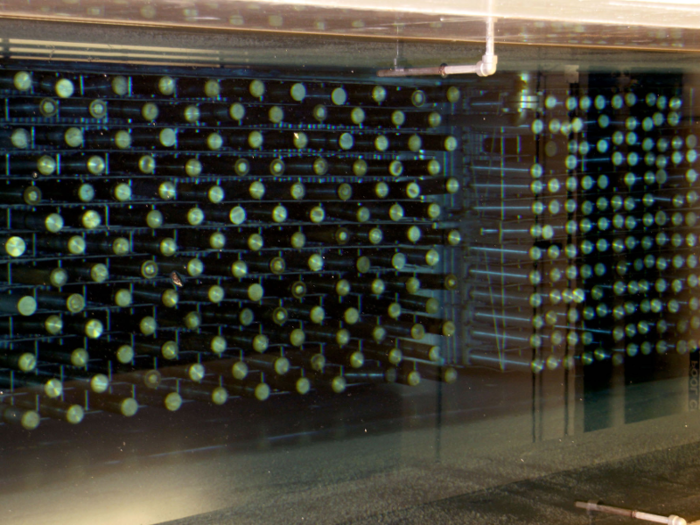
Strontium is also called "bone seeker" because it remains in people's bones once ingested and increases their risk of getting cancer.
In 1989, the Tri-Party Agreement was signed by the Environmental Protection Agency, the Department of Energy, and the Washington State Department of Ecology to clean up the area.

By then Hanford was no longer making plutonium. From the mid-1960s, reactors had been shutting down until the last one closed in 1987. It was exclusively a massive environmental hazard that needed to be cleaned up.
Despite the agreement, what would follow would be a slow, often halting, attempt to clean up the most toxic place in America, at a cost of $2 billion a year.
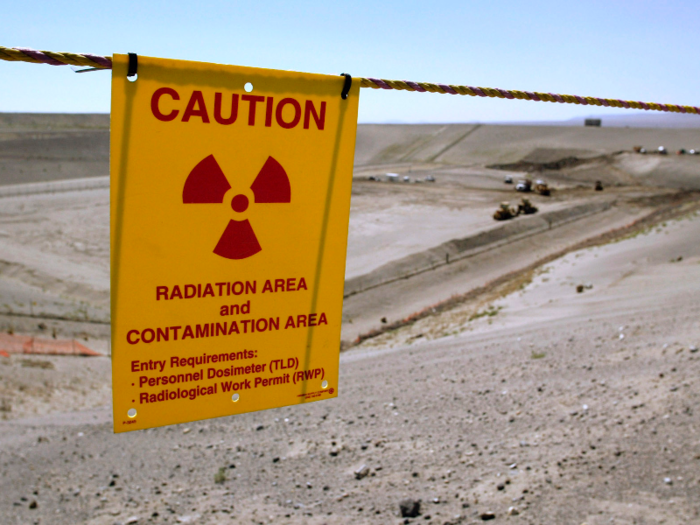
Source: The Guardian
... And reactors were sealed off from the world, also known as being "fully cocooned."
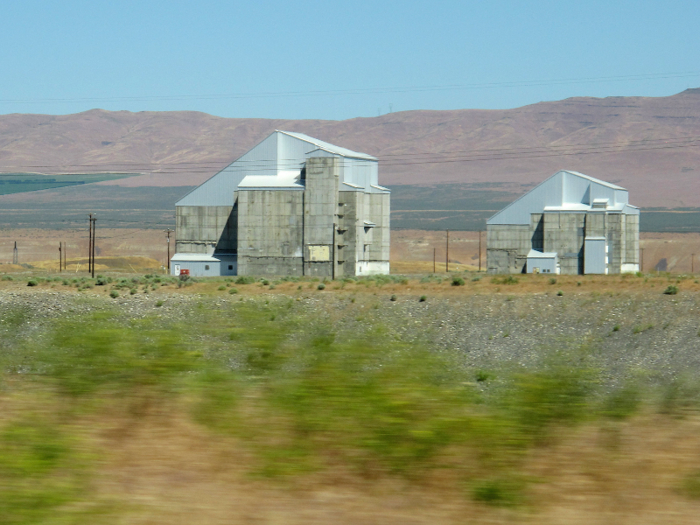
They will remain like this for 75 years, until radiation falls to a safe level and they can be disposed.
In 1998, after 50 years of saying that leaks from the tanks were insignificant, management admitted that was not the case.
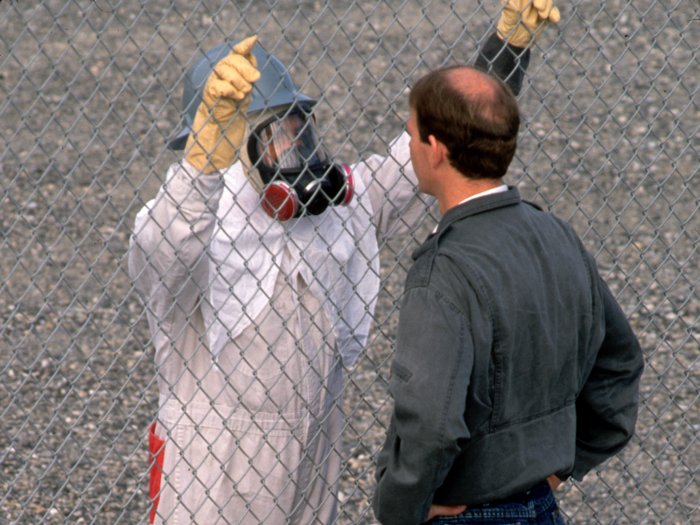
Management also said it would take 10,000 years before the waste would reach groundwater, but it had already reached it.
According to the New York Times, it was only after a million gallons of waste had leaked into the ground, which the Energy Department didn't know how to fix, that it said more information was necessary. A year earlier, the plant fired an employee after he spoke about the issue "too vigorously."
Despite no longer producing plutonium the surrounding areas continued to feel the effects of the nuclear waste.
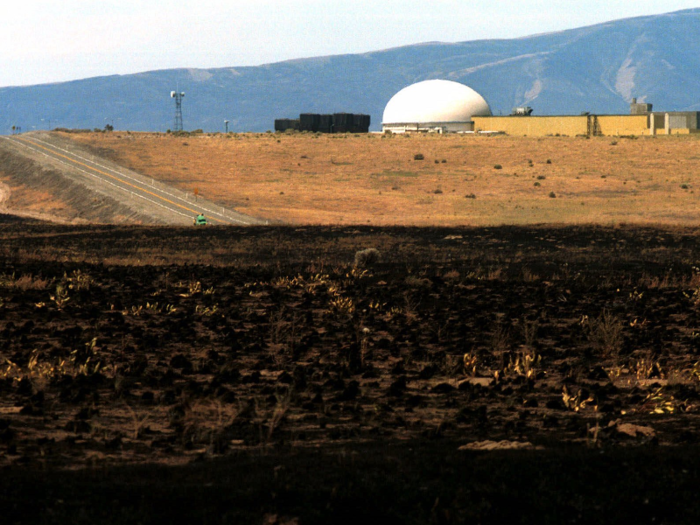
In 2000, wildfires threatened the complex, and Washington's Department of Health reported a rise in plutonium levels in the area, although the levels were not life-threatening. The increase was thought to be spread by dust and ash. There have also been issues with radioactive wasp nests, fruit flies, and rabbits.
When radioactive rabbit droppings were found in the area, it was protocol to set traps to kill the rabbits.
Radioactive tumbleweeds rolling across the reservation also caused issues in the early 2000s.
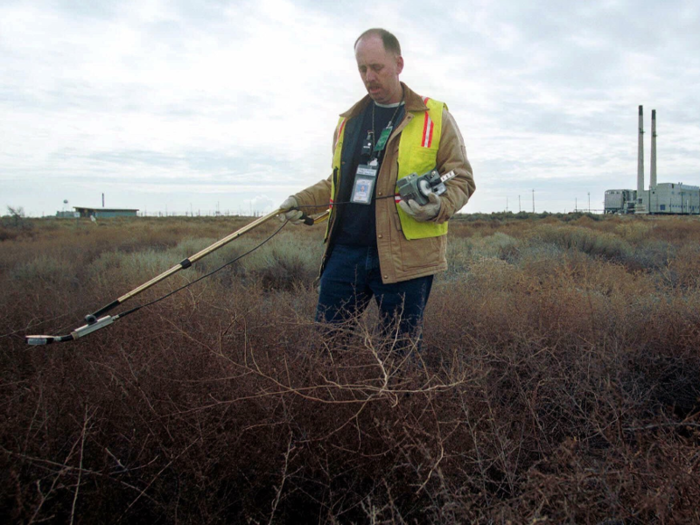
When the Russian thistle decayed and broke from its roots, which could go 20 feet into the ground, the radioactive thistles could roll for up to four miles and spread nuclear radiation.
In 2002, work began on Hanford Vit Plant, a waste treatment plant, which is the key to cleaning up Hanford.
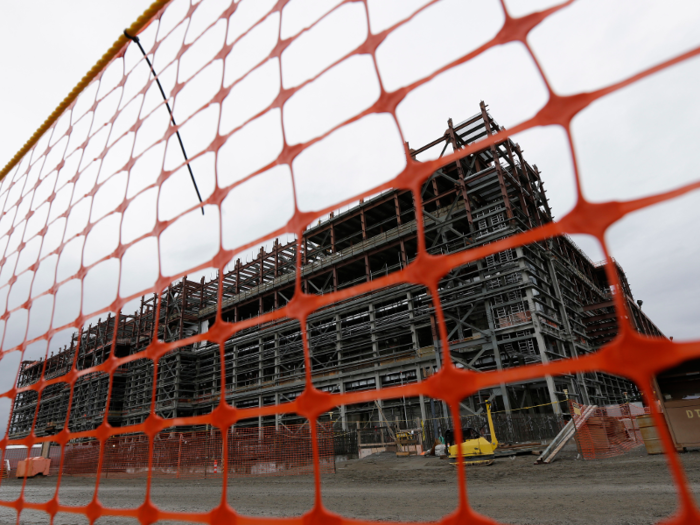
The treatment plant will turn the waste into glass, which can then be stored safely for several thousand years. It's expected to convert more than 50 billion gallons of contaminated waste. But it's not meant to begin processing until 2036, and it will take years to get through all of the waste.
It's also been plagued with uncertainty around what form the waste will be in when it flows through pipes, which led to halting construction in 2012 until the issue could be sorted out.
In 2009, Hanford began offering tours to show the facilities and the famous "B" reactor. The tours are popular — in 2016, 10,000 people went on them.
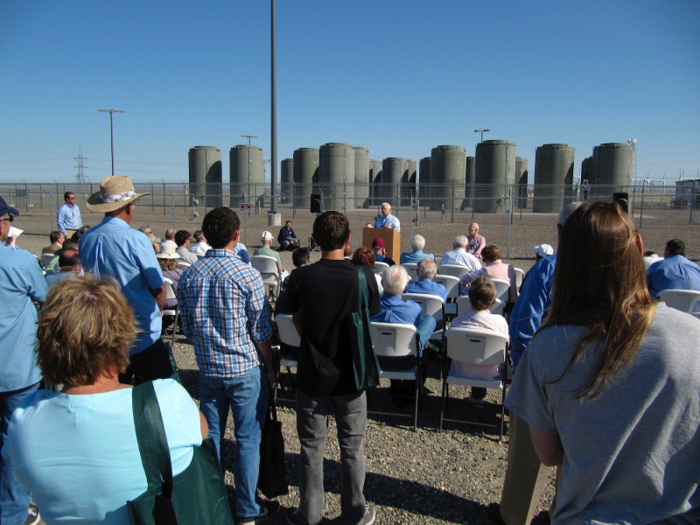
It's deemed safe for tourists. Although it probably isn't quite as exciting as a tour around Chernobyl.
It's also become a tourist destination for kayakers on the Columbia River.
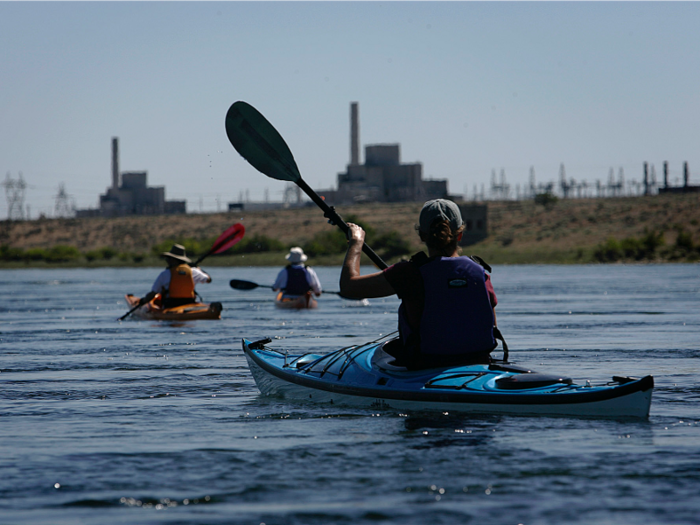
In 2008, Columbia Kayak Adventures ran two to three tours each month, which The Los Angeles Times described as "a theme park next to the Chernobyl Nuclear Power Plant."
As for radiation on and in the river, health officials said fish tested for radiation posed no health risk, while environmental groups said there was a risk for people who regularly swam and fished in the river.
Even as the complex continues to deteriorate. In 2013, new leaks were discovered in several underground tanks.
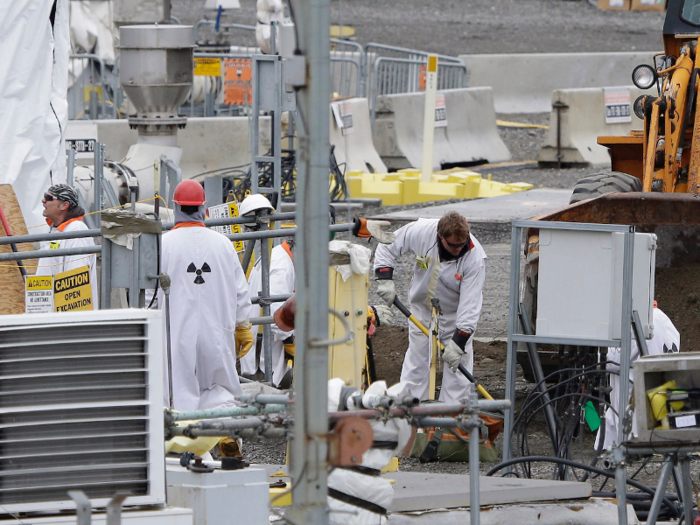
While management already knew that one tank was leaking, at a rate of up to 300 gallons of waste every year, the discovery that five more were also leaking was especially concerning.
As The Daily Beast put it, while nuclear sludge dripping into the soil and mixing with groundwater might sound apocalyptic to many people, to those familiar with Hanford it's just another mishap, of which there have been many.
In 2015, Doug Shoop, the Energy Department's top official at the reservation, said infrastructure was breaking down, and more nuclear radiation would be released.
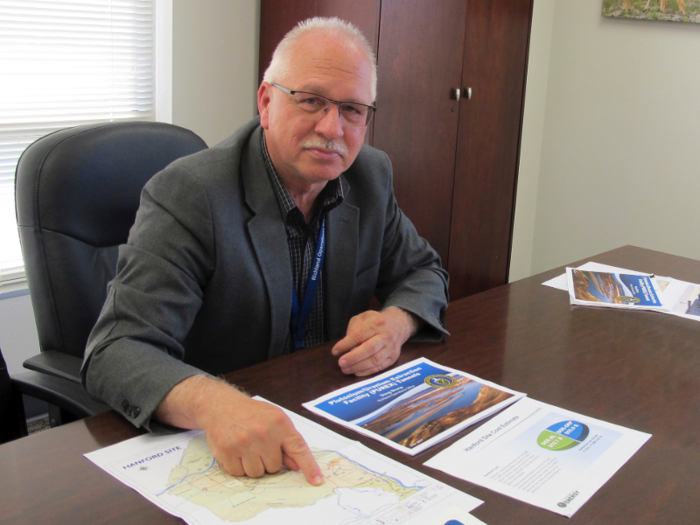
Source: Business Insider
Shoop was right. In 2017, a tunnel storing radioactive waste collapsed.
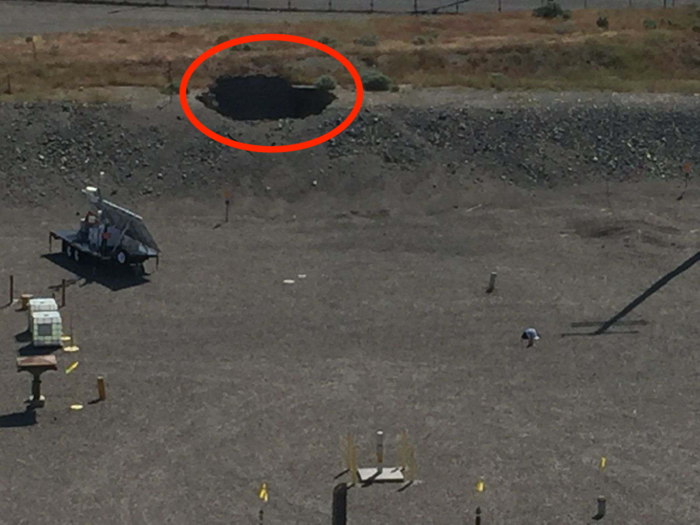
It was covered up again by workers and no contamination was detected, but the EPA said more tunnels would collapse as the equipment deteriorated.
The Department of Energy has said that Hanford's 10,000 workers are still at risk. Here, a worker is checked for radiation.
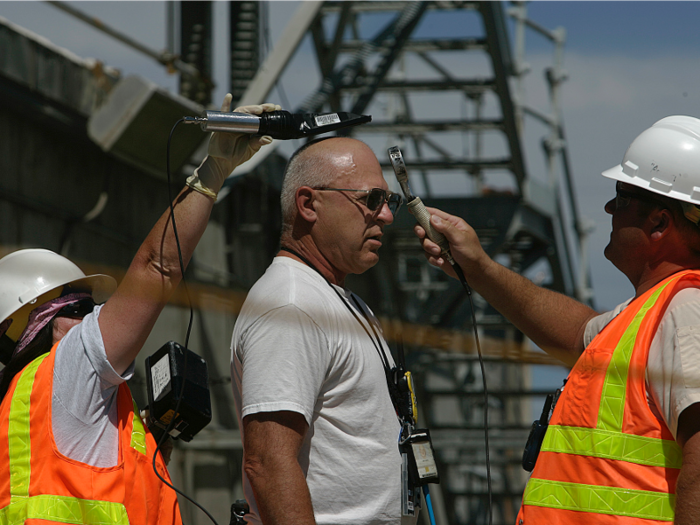
Sources: NBC, Peninsula Daily News
In 2016, 61 employees were exposed to vapors from leaking tanks, two years after a report that there was a "causal link" between the vapors and lung and brain damage.
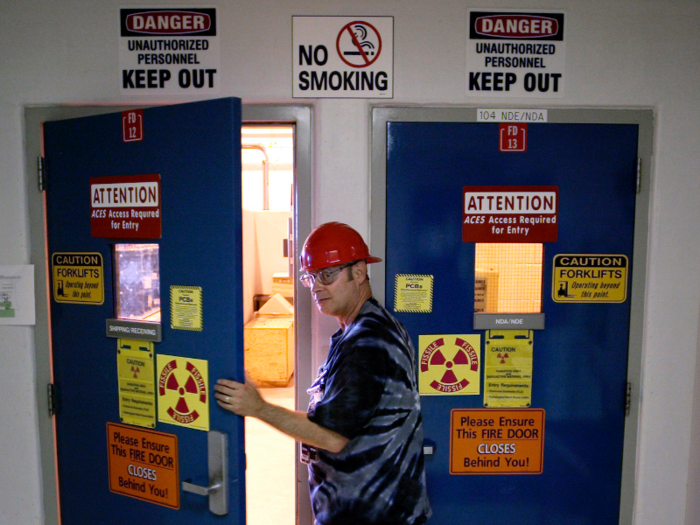
Source: NBC
The Department of Energy wanted to dispose of all of the underground waste by 2047, but that's unlikely.
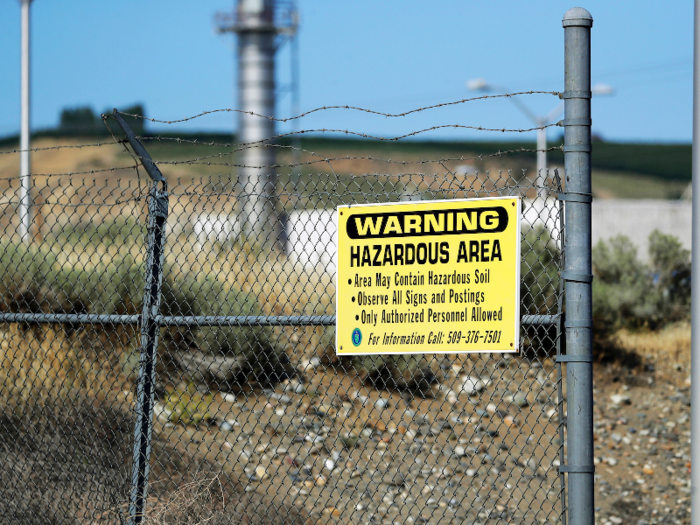
It's now looking more like 2079 or 2102. In February 2019, the department released a new estimate of how much the process would cost. It had leaped from $110 billion to $660 billion.
And while costs are rising, President Trump wants to cut annual funding for the clean-up by $416 million.

Oregon Senator Ron Wyden said the cleanup wouldn't be done for another 300 years if Trump's budget goes through.
Trump's administration also wants to reclassify high-level waste as low-level to cut costs.
Environmentalists won't stop fighting for the cleanup, but Tom Hanford, executive director of the watchdog Hanford Challenge, says that all the waste is never going to be dug up.
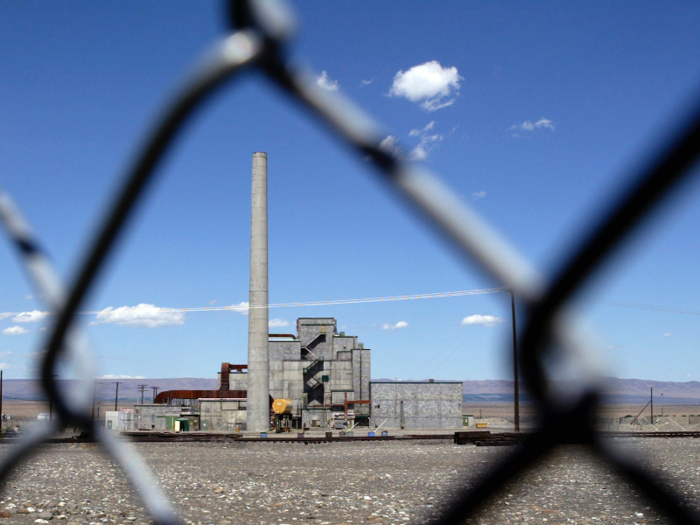
He told The Atlantic in 2018 that the majority of Hanford's waste was going nowhere. "Hanford is going to be a national sacrifice zone for hundreds of years," he said.
Popular Right Now
Popular Keywords
Advertisement
